The Apple iPad Pro Review
by Ryan Smith, Joshua Ho & Brandon Chester on January 22, 2016 8:10 AM ESTFinal Words
Overall, the iPad Pro has proven to be a very different experience for me than previous iPads. The design is definitely familiar, with the same industrial design and general feel as previous iPads scaled up to a 12.9” form factor. However, the change in size is something that feels like it should have been done from the start. Of course, there are people that will carry tablets in cargo pockets that want something closer to a 7” display and people that carry tablets in purses that want a ~10” display, but if you’re like me and the only way you can realistically carry a tablet is in a backpack then the 12.9” size makes far more sense.
It’s also noteworthy that despite this increased size I didn’t really notice that it had gotten significantly harder to handle in the hands than an iPad Air 2. This is likely helped by avoiding placing heavy batteries at the edges of the tablet, which reduces the moment of inertia and associated hand or arm strain from holding the tablet for hours on end. This is especially important when considering the Apple Pencil which makes it pretty natural to hold the tablet with one hand and draw with the other for hours on end.
On the SoC side, we’re finally seeing a major player in ARM SoCs directly competing with Intel on their home ground of sorts, and the results are at least somewhat shocking. Despite a handicap on process node, the CPU of the A9X isn’t all that far off from Skylake Core M. And while A9X can't go toe-to-toe, Apple is for the first time capable of reaching Intel's level for some workloads. Otherwise on the GPU side, Apple arguably bests Intel. While iOS vs. Windows doesn't lend itself to as precise comparisons as we'd like due to some fundamental architectural differences, for a developer writing a GPU-accelerated application tailored for the platform the A9X’s 12 Cluster Series7XT GPU is capable of doing more than the Core M’s Intel HD 515.
Ultimately Apple's Twister CPU core is now the “new normal” for Apple devices, so I’m not nearly as blown away as I was with the iPhone 6s, but I really do have to emphasize that this SoC is incredibly fast. Currently, it has no real competition in the ARM SoC space, and I suspect it won’t for quite some time even in light of new SoCs on the horizon like the Exynos 8890 and Snapdragon 820, as the SoC is tailored for tablet use rather than a smartphone SoC with more thermal headroom. When combined with the Apple SSD present in this device, it’s hard to complain about performance for the most part.
This strong showing in SoC performance, combined with a noticeable amount of work on the display results in a relatively impressive level of battery life. While it isn’t really better than the iPad Air 2 here, the sheer efficiency of the hardware in the iPad Pro means that the battery is smaller on a relative basis despite the large difference in display size. It’s easy to fixate on battery size as the sole determinant of battery life, but that ignores half the equation. The one notable area where efficiency isn’t as good as one might hope is LTE battery life, but I suspect that the impact here isn’t going to be as noticeable as it is with a smartphone as even with our LTE variant I spent most of my time using WiFi to get work done.
From an internal hardware perspective the one real issue here is the rate at which the iPad Pro charges, which is starting to approach unacceptable levels. Future iterations of iPad Pro really need to ship with a much more powerful charger. Even 4 hours to charge is pretty excessive compared to the 3 hours or so that it takes most laptops to charge or the 2 hours that it takes for a phone to charge.
On the display side, Apple continues to ship some of the best displays I’ve seen in the industry. The iPad Pro is no exception, with a relatively bright panel combined with an incredibly good anti-reflective coating to basically eliminate the disadvantages that come with glossy displays. The move to a new display technology also makes for some truly impressive contrast figures for an LCD, although it’s not a competitor to OLED if you only focus on contrast. As an aside, I suspect microLED or OLED is going to have to take the place of traditional LCDs at some point, as OLED is probably going to be unambiguously superior to even the best LCD by the end of this year if the trajectory of improvement continues.
But LCD or not, the iPad Pro’s display also has incredibly good color calibration. Apple does tend to prefer slightly blue white balance, but I suspect this is mostly a trade-off between color accuracy and power efficiency. For color-critical work in areas like medical and creative industries I suspect that the iPad Pro is sufficient due to its relatively low color shift with changes in viewing angles. It’s also interesting to see that there is clearly evidence of Apple’s custom DisplayPort timing controller (TCON) within the system files, but we basically have to take Apple at their word that this TCON is dynamically switching between 60 and 30 Hz refresh rates as I really couldn’t tell that this was happening in practice, or within system files.
While the basics are critical, the iPad Pro earns its “Pro” moniker on the basis of its accessories, the Apple Pencil and Smart Keyboard. The Apple Pencil is unquestionably the best stylus I’ve ever used in any mobile device. I would argue that the Apple Pencil combined with the iPad Pro is probably the single greatest threat to Wacom’s dominance in the professional market today. We can spend all day arguing about how Apple Pencil has no buttons and has an odd charging method, but for $900 USD you can either buy a Wacom Cintiq 13HD Touch or an iPad Pro with Apple Pencil. If the right apps are available on the iPad Pro, it’s pretty much indisputable that the iPad Pro is going to be a better, more elegant solution for getting stylus-related work done.
Outside of creative work, the Apple Pencil is shockingly good as a pencil/pen and paper replacement. Even with the default Notes app I felt like the iPad Pro is far and away superior to carrying around a folder, notebook paper, pencils, pens, erasers, straight edges, and textbooks. I’ve always been looking for a tablet that could be seriously used for academic work, and the iPad Pro is pretty much what I’ve always been looking for. The Surface Pro 4 comes close to be sure, but I would argue that it really isn’t a proper tablet by virtue of how dependent it is on trackpad input. The stylus also just not as well-implemented as the iPad Pro, which is evident as soon as you try to do perfectly straight diagonal lines. In addition to education contexts, I wouldn’t be surprised to see Apple Pencil take off in areas like point of sale registers. While 3D Touch is great, the Apple Pencil managed to surprise me even more. However, the applications of Apple Pencil are somewhat limited to these specific cases compared to the more universal applications of 3D Touch.
The Smart Keyboard by comparison is a bit of a letdown. While I like using the keyboard a lot when I can set it up on a table or something and do nothing but type out paragraph after paragraph, the trouble is that as soon as some other UI interaction is needed the user experience kind of falls apart. Both setting up and taking down the keyboard takes some time, and doing the motions/origami necessary to do this is not something that can be done carelessly as the Smart Keyboard can and will fall apart/behave unpredictably if you don’t put it together properly. In order to really hit it out of the park, the Smart Keyboard needs to be more stable in the lap, have at least one more useful angle, and be much faster to set up/take down. In essence, the hope is to be able to rival a touch keyboard for bring-up/take-down, but introduce the ability to touch type at speeds that touch keyboards realistically cannot hope to rival. I don’t really think it’s reasonable to argue that the iPad Pro with the keyboard set up is an ideal experience for UI navigation, as using the touch screen is about as ergonomic as a touch screen laptop and using the keyboard for navigation only feels an awful lot like using a command line interface.
In fairness to Apple though, the Smart Keyboard is arguably the right direction for tablets to take. We can talk about how the Surface Pro implementation is better, but I’m still not a big fan of using a trackpad on a “tablet,” and pecking at a display with my finger is arguably even worse. The kickstand also has a lot of issues with lap stability as well, although it does resolve some of the concerns with getting the right angle for proper visibility of the display. The problem of text input on a “pro” tablet is one that needs new solutions, and other than the iPad Pro and Pixel C I honestly haven’t seen anything that comes close to getting in the right direction.
On the software side of things, the iPad Pro continues to be one of the few (if not only) tablets that has an OS and UI that is properly designed for a mobile tablet. Microsoft is doing an admirable effort here with Windows 10, but the sheer difficulties that I have with something as simple as high DPI scaling in Windows is just unacceptable for a tablet. It’s also difficult to deal with the sheer number of legacy applications out there, which really complicates control schemes. I found the vast majority of the time I ended up having to use a stylus or trackpad for simple UI interactions because the touch targets were just too small otherwise. Android has some pretty severe issues with making a tablet UI that is more than just a scaled-up phone UI, which leaves the iPad Pro as more or less the only game in town. There are some issues that stem from the lack of ability for apps to really interface with each other and the difficulty of abstracting away the file system, but for the most part I found iOS to be quite good for getting work done.
However, iOS is not a perfect tablet OS. One real problem here is that the multi-window UI isn’t quite as good as it needs to be. While the current list of apps that fully support this functionality isn’t unmanageable, as time goes on I suspect it will get to be rather annoying to scroll through a long list of apps. There’s also the issue of performance. While there was a time when iOS was just incredibly smooth all the time, I’m starting to notice a trend of apps and general UI tasks that show rather concerning levels of frame drops. I’m not really sure exactly when this happened, but something as simple as scrolling through the Notes app shows frame drops on par with scrolling through Google’s Play Store app. This is definitely an area where Apple should focus on improving, as performance problems shouldn't be a concern with a tablet that's as powerful as the iPad Pro.
While the camera is arguably quite low on the list of priorities for a tablet, Apple manages to deliver one of the best cameras in a tablet today. I honestly wouldn’t advise using it as an actual camera, but as a last resort it works quite well. The speakers are also hugely impressive for multimedia use, and probably beat everything else I’ve ever tried on a mobile device, although this is based upon subjective observation. I found that watching YouTube and movies on this tablet is great when paired with the speakers. People that only use headphones for audio might find this feature pointless, but if you’re sitting in bed or in your room watching a movie it’s definitely convenient to not have to put in headphones while getting acceptable audio quality.
Overall, the iPad Pro is an incredibly good tablet. I’ve always liked the idea of a tablet, but for the most part I’ve been deeply dissatisfied with the implementations of tablets. With the iPad Air 2 review I really emphasized how a proper keyboard and a good stylus would really make the user experience much more compelling, and with the iPad Pro we’re finally starting to see movement towards the tablet that I’ve always wanted. The iPad Pro is arguably the first tablet that I personally want to even consider buying. It isn’t perfect by any means, and there is still a lot of work to be done - seemingly fitting for a first-generation Apple device - but for the first time in a long time it feels like the broader tablet market is advancing once again. If you want a proper tablet that can replace pencil and paper with a keyboard for extended typing sessions, I have no problem recommending the iPad Pro. If you're hoping for a laptop that can also double as a tablet, I suspect that the Surface Pro 4 will remain the right choice for you.


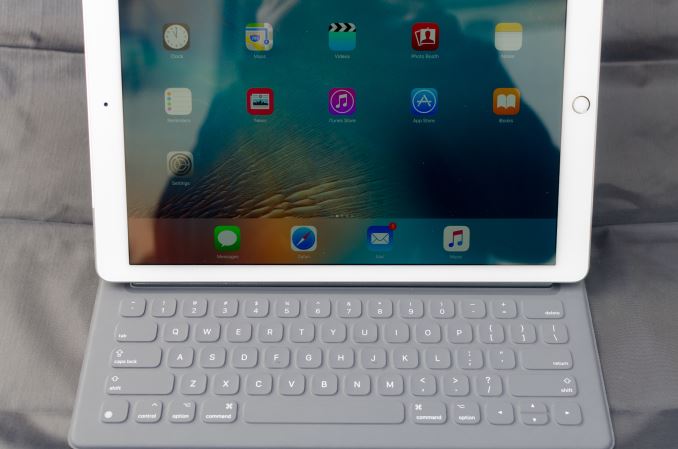
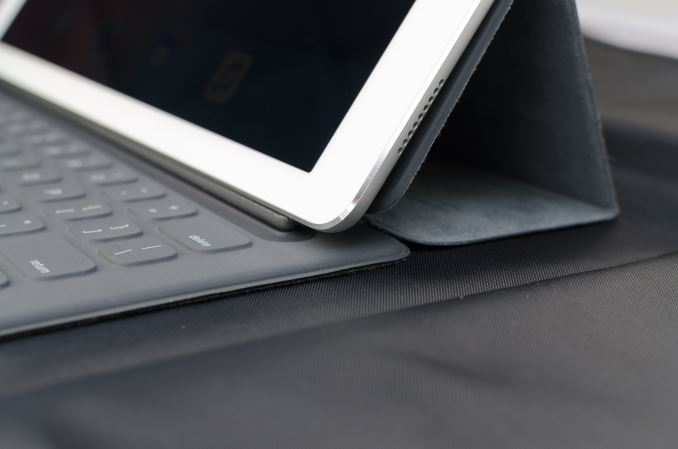

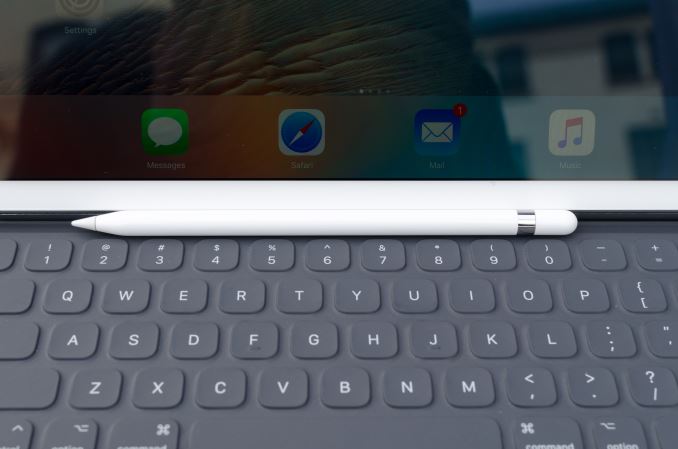
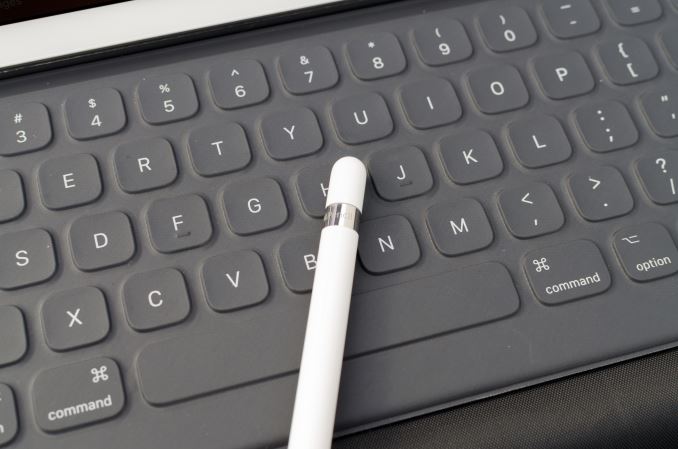

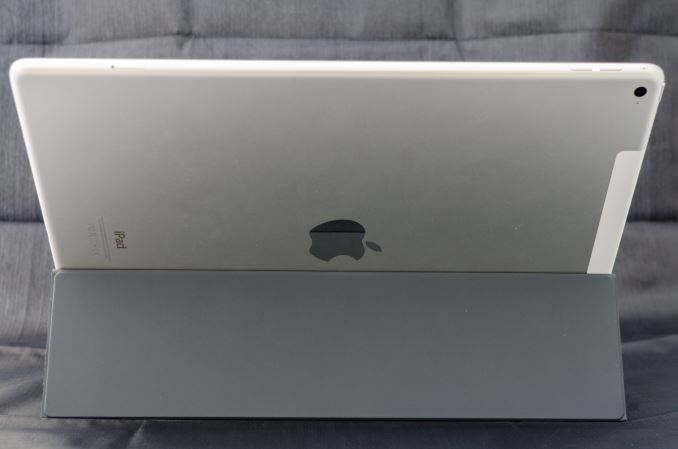
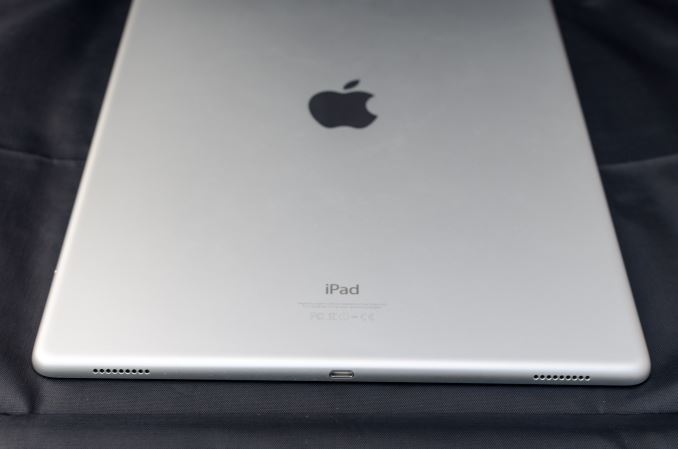
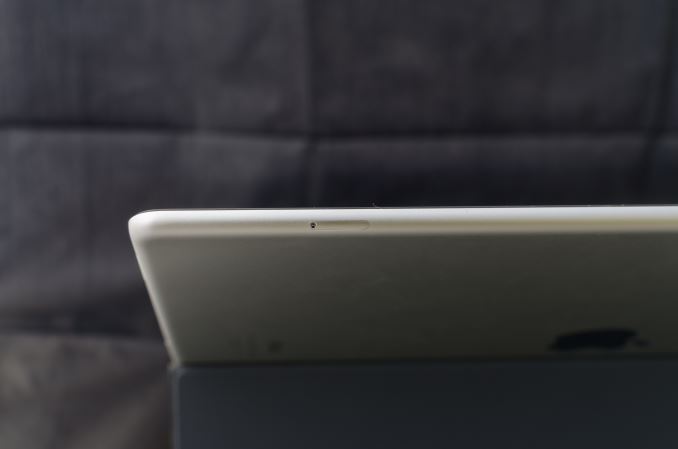
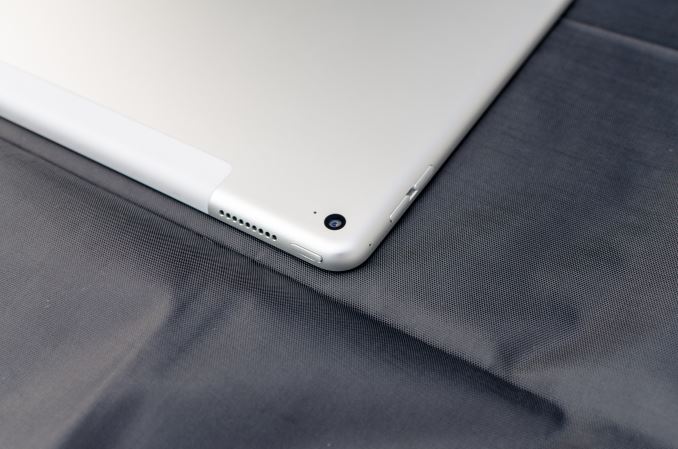
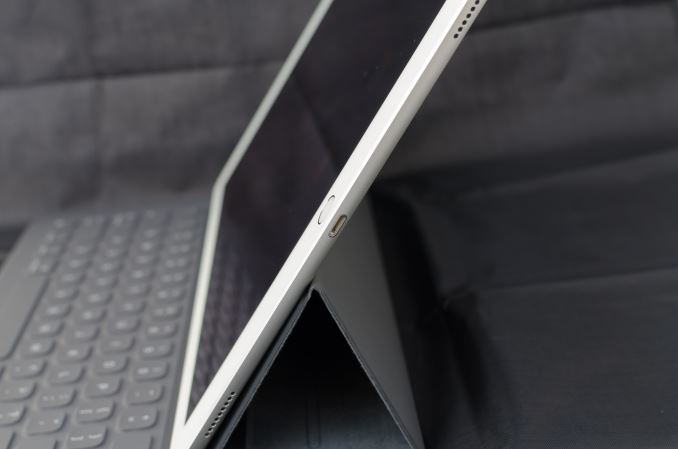








408 Comments
View All Comments
xerandin - Saturday, January 23, 2016 - link
In what way did Microsoft saw Surface Pro parts off of other products? You know what's better than that "most stable, secure, and highest quality mobile OS?" For most people, that would be Microsoft Windows--even if they love to complain about it, you can't deny Microsoft's ubiquity in the Professional space (and home userspace, too, but we're trying to keep this in the professional sector, right?)I've heard a few people at work say that the sysadmins love Macs (it was a Director obsessed with his Macbook telling me this), but I can't seem to find any of these supposed Mac-lovers. It could have something to do that they're a nightmare to administer for most sysadmins running a domain (which covers the vast majority of sysadmins), or the fact that Mac users tend to be just as inept and incapable as Windows users, so you get to have another pain-in-the-ass group of users to deal with on a system that just isn't very nice to administer.
If you take off your hipster glasses for a moment and actually use computers in the world we live in, there's no way around the reality that Microsoft wins in the Professional space--including their beautifully made, super-powerful Surface Pro.
And no, I'm not a Microsoft shill, I just can't stand Apple fanboys with more money than sense.
gistya - Sunday, January 24, 2016 - link
Xerandin, you have no idea what you are talking about. 90% of the professional software development studios I work with are almost solely Mac based, for the simple reason that they barely need an IT department at all, in that case.Windows is technical debt, plain and simple. It's legacy cruft stuck to the face of the world. The only IT guys that hate Macs are the idiot ones who don't know bash from tsch and couldn't sudo themselves out of a wet paper box. Then there are the smart ones who know that a shift to such a low maintenance platform would mean their department would get downsized.
But so many companies are stuck on crap like SAP, NovellNetware, etc., that Microsoft could literally do nothing right for 10 years and still be a powerhouse. Oh wait.
Apple hardware is worth every extra cent it costs, and then some; if you make such little money that $500 more on a tool that you'll professionally use 8-12 hours a day for three years is a deal-breaker, then I feel very sorry for you.
But personally I think it's more than worth it to have the (by far) best screen, trackpad, keyboard, case, input drivers, and selection of operating systems. I have five different OS's installed right now including three different versions of windows (the good one, and then the most recent one, and the one that my last job still uses, which does not receive security patches and gets infected with viruses after being on a website for 10 seconds).
As for the iPad Pro, all of you fools just don't understand what it is, or why the pencil is always sold out everywhere, or what the difference is. As a software developer I can tell you that there is the most extreme difference; and that more development for iOS is being done now than ever before, and is being done at an accelerating pace. This is just version 1.0 of the large-size, pro type model for Apple, and those of us who did not buy it yet and who are still waiting for that killer app, are basically saying that well, once that app comes out, then heck yes we'll buy it. Do you seriously believe that no company will rise up to capitalize on that obviously large market? Someone will, and frankly lets hope it's not Adobe.
I regularly see iPad pros now in the hands of the professional musicians and producers I work with, and they are most certainly using them for professional applications. That's a niche to be sure, but everyone who thinks that the surface pro 4 (a mildly crappy laptop with a touchscreen that makes a bad, thick tablet and an underpowered, overheated laptop) is even remotely in the same category of device, is utterly smoking crack.
doggface - Sunday, January 24, 2016 - link
I think it might be you smoking the crack there mate. Cor, what a rant. Microsoft are pretty safe in enterprise and it has everything to do with managing large networks(1000s not 10s of computers.. Please, direct me to Apple's answer to sccm, please show me Apple's answer to exchange. Please show me an Apple only environment running 1000 different apps outside ofGoogle and Apple HQ. Just aint haopening.Constructor - Sunday, January 24, 2016 - link
IBM (yes, the IBM!) has just announced that they will switch over to Macs a while ago. And they're neither the first nor the last. Springer (a major german media company) had done that a while ago already for similar reasons (removing unproductive friction and cutting the actual cost of ownership due to less needed user support).I know that many people had imagined that Windows would be the only platform anyone would ever need to know, but that has always just been an illusion.
damianrobertjones - Monday, January 25, 2016 - link
Link to the article please! They're THINKING of using Apple for mobile use... .Constructor - Monday, January 25, 2016 - link
Nope. They're massively ramping up Mac purchases as well, with a target of 50-75% Macs at IBM. They are already full steam ahead with it:http://www.i4u.com/2015/08/93776/ibm-purchase-2000...
(Okay: The official announcements don't have that aspect, but an internal video interview with IBM's CIO leaked to YouTube makes it rather explicit even so.)
One of the motivators is apparently that despite higher sticker prices the total cost of ownership is lower for Macs (which is not news any more, but having IBM arriving at that conclusion still says something).
Oxford Guy - Wednesday, January 27, 2016 - link
Gartner said in 1999 that Macs were substantially cheaper in TCO.mcrispin - Tuesday, January 26, 2016 - link
doggface, you speak with confidence where that confidence isn't deserved. I've managed deployments of OS X way over 10k, there are plenty of places with deployments this high. JAMF Casper Suite is the "SCCM of Apple", I don't need an "Apple" replacement for Exchange, 0365 and Google are just fine for email. There are plenty of non-Apple/Google Apps for OS X and iOS. You are seriously misinformed about the reality of the OS X marketplace. Shame that.Ratman6161 - Wednesday, January 27, 2016 - link
mcrispin...sure you can find individual shops that have done big MAC deployments. but its anecdotal evidence. Its like looking at one neigborhood in my city and from that conclude that trailer parks are the norm in my city of 15,000.Take a look at this Oct 2015 article on Mac market share (I'm assuming you dont consider Apple Insider to be a bunch of Microsoft shills?) http://appleinsider.com/articles/15/10/08/mac-gain...
While touting how Mac is gaining market share they show a chart where in Q32015 they were at 7.6%. The chart is by company and even smaller Windows PC vendors Asus and Acer are at 7.1 and 7.4 respectively. Throw in Lenovo, HP and Dell at 20.3%, 18.5%, 13.8% and the 25.3% "others" (and others are not MAC's because Apple is the only company with those).
So IBM is doing 50 - 75% Mac's? OK Ill take your word for that but so what? In the larger scheme of things Apple still has only 7.6% and selling some computers to IBM isn't going to siginificantly change that number. Also, don't forgot that some companies (that compete with Microsoft in various areas) will not use a Microsoft product no mater how good it was.
No matter how you look at it, Windows is the main stream OS for busineses world wide. Touting the exceptions to that doesn't cange the truth of it.
Constructor - Wednesday, January 27, 2016 - link
Of course most workplace computers now are PCs. The thing is just that Macs are making major inroads there as well.$25 billion in Apple's corporate sales are already very far removed from your theory (and that's even without all the smaller shops who are buing retail!).